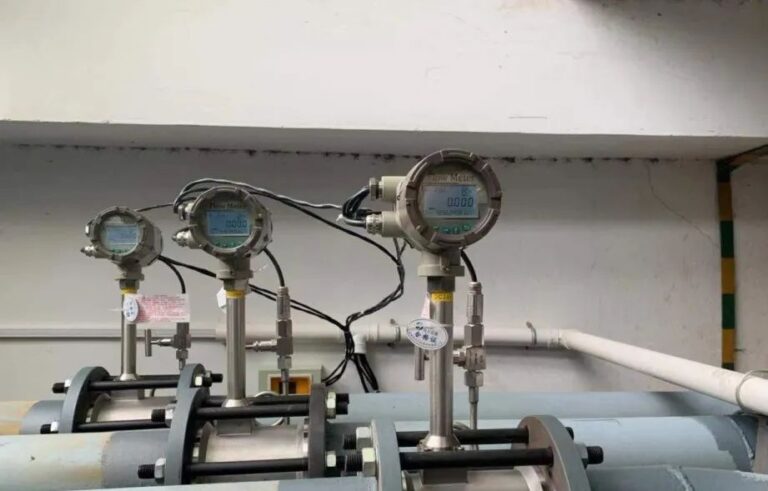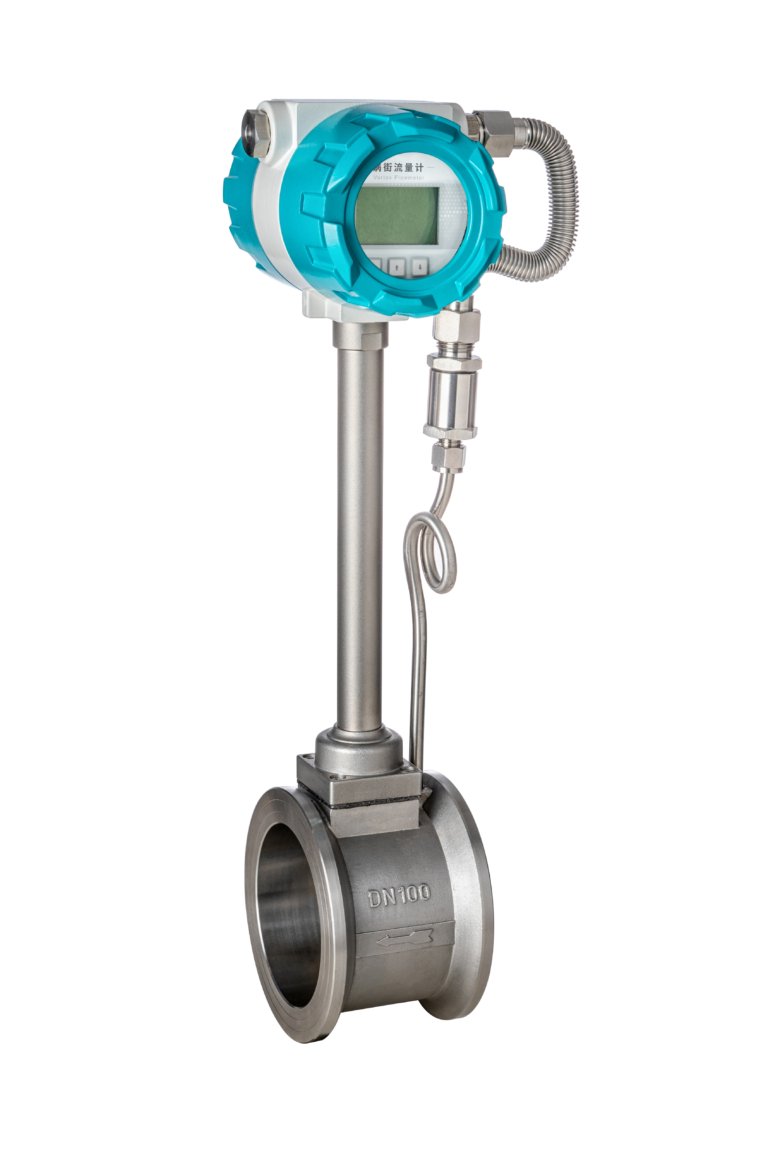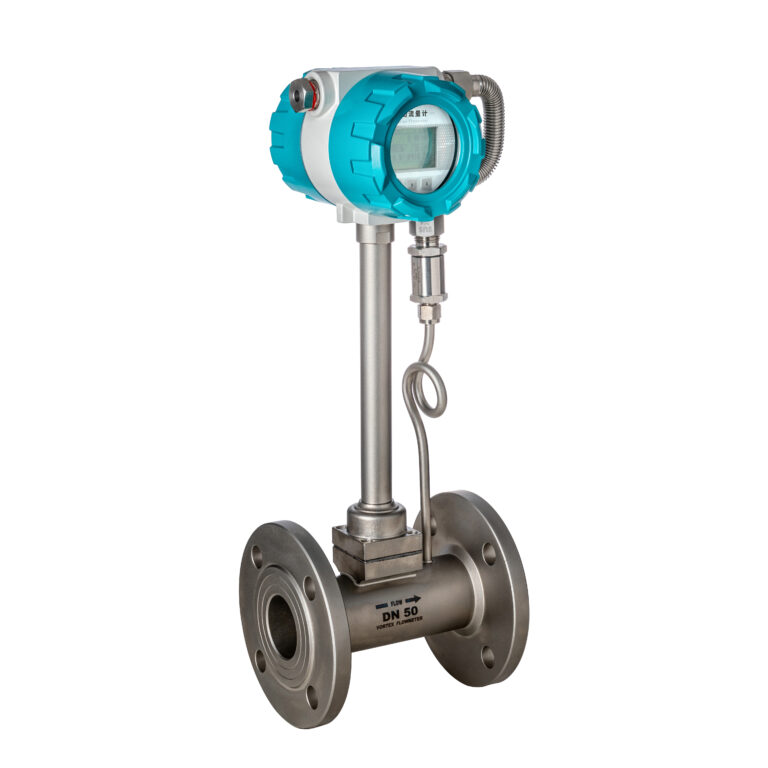The proper installation of vortex flow meters is a critical factor in achieving accurate and reliable measurements. During the calibration process, the installation must follow specific guidelines to ensure that the meter’s performance is evaluated under conditions that replicate its operational environment. This article outlines the key requirements for the installation of vortex flow meters during calibration.
Importance of Proper Installation
Incorrect installation of vortex flow meters can introduce significant errors in measurement, compromise the accuracy of calibration results, and lead to inefficiencies in industrial processes. Following proper installation practices ensures that the calibration reflects the meter’s true performance.
Key Installation Requirements
1. Straight Pipe Length
The presence of upstream and downstream straight pipe sections is essential for maintaining a stable flow profile. These sections help minimize disturbances caused by bends, valves, or other components in the pipeline. Recommendations include:
Upstream Pipe Length: Typically, 10 to 15 times the pipe diameter (D) of straight pipe is required upstream of the vortex flow meter.
Downstream Pipe Length: A minimum of 5 times the pipe diameter (D) of straight pipe is usually needed downstream of the meter.
Flow Conditioners: In cases where achieving the recommended pipe lengths is impractical, flow conditioners can be used to stabilize the flow.

2. Alignment and Orientation
Proper alignment and orientation of the vortex flow meter are critical for accurate measurement. Key considerations include:
Correct Positioning: Ensure that the flow meter is installed in the correct orientation as specified by the manufacturer, such as horizontal or vertical alignment.
Flow Direction: Verify that the flow direction matches the arrow or markings on the flow meter body.
Level Installation: The meter should be installed level to avoid introducing errors due to gravitational effects on the fluid.
3. Support and Stability
Vibration or movement of the flow meter during calibration can lead to inaccurate readings. Installation should ensure:
Stable Mounting: Use appropriate supports or brackets to secure the flow meter and minimize vibration.
Isolation from Vibrations: If the pipeline is subject to vibrations, isolation mounts or dampeners should be used.
4. Avoiding Flow Disturbances
To maintain a consistent flow profile, avoid installing the vortex flow meter near components that can cause disturbances, such as:
Bends or Elbows: These should be located sufficiently upstream of the flow meter.
Valves: Control valves or shut-off valves should be installed downstream of the flow meter whenever possible.
Pumps: Ensure the flow meter is not installed immediately downstream of a pump, as this can cause turbulent flow.
5. Pressure and Temperature Considerations
The flow meter must be installed in conditions that match its design specifications for pressure and temperature. This includes:
Pressure Ratings: Confirm that the pressure in the pipeline does not exceed the flow meter’s maximum pressure rating.
Temperature Range: Ensure that the fluid temperature falls within the meter’s operating range, as extreme temperatures can affect accuracy.

6. Electrical and Signal Connections
For vortex flow meters with electronic components, proper electrical installation is crucial. Considerations include:
Wiring Integrity: Ensure that all wires are properly connected and insulated to prevent signal loss or interference.
Grounding: Verify that the flow meter is properly grounded to reduce electrical noise.
Cable Routing: Route cables away from high-power electrical lines or equipment to minimize electromagnetic interference.
7. Calibration Environment Setup
The calibration environment must mimic the operating conditions as closely as possible. Key aspects include:
Fluid Properties: Use calibration fluids that match the operational fluid’s properties, such as density and viscosity.
Flow Conditions: Ensure that the flow rate during calibration falls within the meter’s operational range.
Environmental Factors: Maintain stable temperature and pressure conditions in the calibration environment.
Best Practices for Installation During Calibration
Follow Manufacturer Guidelines: Always adhere to the installation instructions provided by the flow meter manufacturer.
Use Standardized Checklists: Implement checklists to ensure all installation requirements are met before calibration begins.
Inspect and Verify: Conduct a thorough inspection of the installation to confirm compliance with guidelines and standards.
Document the Process: Record all installation details, including pipe lengths, flow conditions, and alignment, for traceability.
Test Before Calibration: Run preliminary tests to verify that the flow meter is functioning correctly under the installed conditions.

Conclusion
Proper installation of vortex flow meters during calibration is essential for achieving accurate and reliable results. By adhering to the outlined requirements and best practices, organizations can ensure that the calibration process reflects the true performance of the flow meter. This not only enhances measurement accuracy but also contributes to the efficiency and safety of industrial operations.
